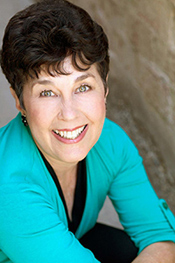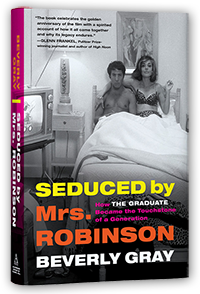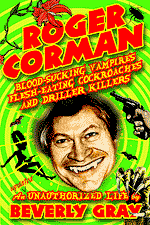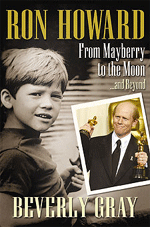Black History Month is over, but I musn’t neglect a book
that gives a fascinating glimpse of life in the civil rights era. David
Margolick’s Elizabeth and Hazel: Two
Women of Little Rock is a stunning recognition of the power of one photo to
change history. In passing, the book also reveals the extent to which lives are
shaped by images seen on TV and at the movies.
Let me explain. On September 4, 1957, two fifteen-year-old girls
set out for Central High in Little Rock, Arkansas. Elizabeth Eckford was one of
nine black students who’d volunteered to desgregate the all-white school. The
other eight approached Central High as a group. Through a misunderstanding,
Elizabeth arrived alone – and was instantly set upon by a mob spewing racist
epithets. In the first photo to hit the press, Elizabeth is in the foreground,
her tense face half-hidden behind oversized dark glasses. But the picture’s focal
point is Hazel Bryan, her mouth distorted as she screams invectives at the girl
she refuses to accept as a classmate.
This photograph galvanized the nation. At a North Dakota
concert venue, it prompted the usually genial Louis Armstrong to deliver a
blistering attack on the Jim Crow South, and his words were quickly turned by
the USSR into anti-American propaganda. Before long President Eisenhower
announced he was sending federal troops to ensure the peaceful integration of
Central High. It was hardly the last time black-versus-white friction would
make the evening news.
Margolick’s book, zeroing in on the two girls at the heart
of the photo, makes some surprising discoveries about their motivations. Elizabeth,
painfully shy, was partly inspired to enter Central High by crusading attorney Clarence
Darrow. She’d come to admire Darrow through Inherit
the Wind, which she watched in one of Little Rock’s segregated movie
theatres. She and her family felt the
stirrings of black pride – “There’s a Negro on television!” – whenever Nat
Cole, Harry Belafonte, or Ella Fitzgerald appeared on the tube.
Hazel, theatrical by nature, had chosen her tight-fittimg
dress on that fateful day to emulate Marilyn Monroe and other Hollywood stars.
Always craving attention, she stood outside Central High (in Margolick’s words)
“yelling awful things, awful enough for people to notice, even before it was
frozen on film.” As the hateful photo circulated, then became published in
textbooks, “her image increasingly became the official face of intolerance.”
In later years, Hazel made a U-turn, renouncing intolerance
and making a sincere attempt to befriend Elizabeth. But her former image stuck,
especially when the two appeared together on the Oprah Winfrey Show, and their
famous host seemed unconvinced of her change of heart. Meanwhile, Hollywood and
the U.S. government joined to turn the Little Rock desegregation battles into
happy talk. 1964’s Nine from Little Rock was commissioned by the U.S. Information
Agency to show foreign nations how America was overcoming its racial issues:
Elizabeth appeared on camera holding college textbooks, but the emotional
problems that ultimately thwarted her college dreams were hidden from view.
(The film won an Oscar for best documentary short.) A 1981 TV movie, Crisis at Central High, and Disney’s
1993 The Ernest Green Story (focusing
on the most successful of the Little Rock Nine) also put a positive spin on an
experience that has shadowed Elizabeth’s and Hazel’s lives in complex and often
painful ways.
I’m delighted that David Margolick will be one of my
panelists at the annual conference of the American Society of Journalists and Authors, discussing his career
as a biographer. It happens on Saturday, April 27 in New York City, and the
public is cordially invited.








Wow. I was not familiar with this photo or the story behind it - but I can readily see how it inspired an entire book. The picture itself makes me inutterably sad. The anger on Hazel's face - but more, the weary resignation I think I see on Elizabeth's.
ReplyDeleteMr. Margolick's book sounds fascinating. The panel you will both be on in April sounds like it will be amazing. I will not be in the NY city area at that time - but I would be there in a heartbeat if I was. Best of luck with your travels and the conference - though I know we'll be "seeing" each other 'round the Blogosphere in the meantime. I'm writing a post for my April A-Z run right now that concerns a certain exploitation filmmaker we're both familiar with...
Thanks, Mr. Craig. I should point out that other news photographers were present on that day, so several versions of this famous photo exist. But the shot by Will Counts of the Arkansas Democrat was the first in print, and also the most dramatic. Today, after being reproduced any number of times in magazines and history books, it holds a place of honor in the archives of Indiana University. I wish this blog post gave me space to delve into other intriguing aspects of Margolick's book, like the fact that Elizabeth and Hazel -- many years later -- briefly became close friends, but were ultimately pulled apart by their own personal demons. Kudos to Margolick, whom I look forward to meeting next month.
ReplyDelete